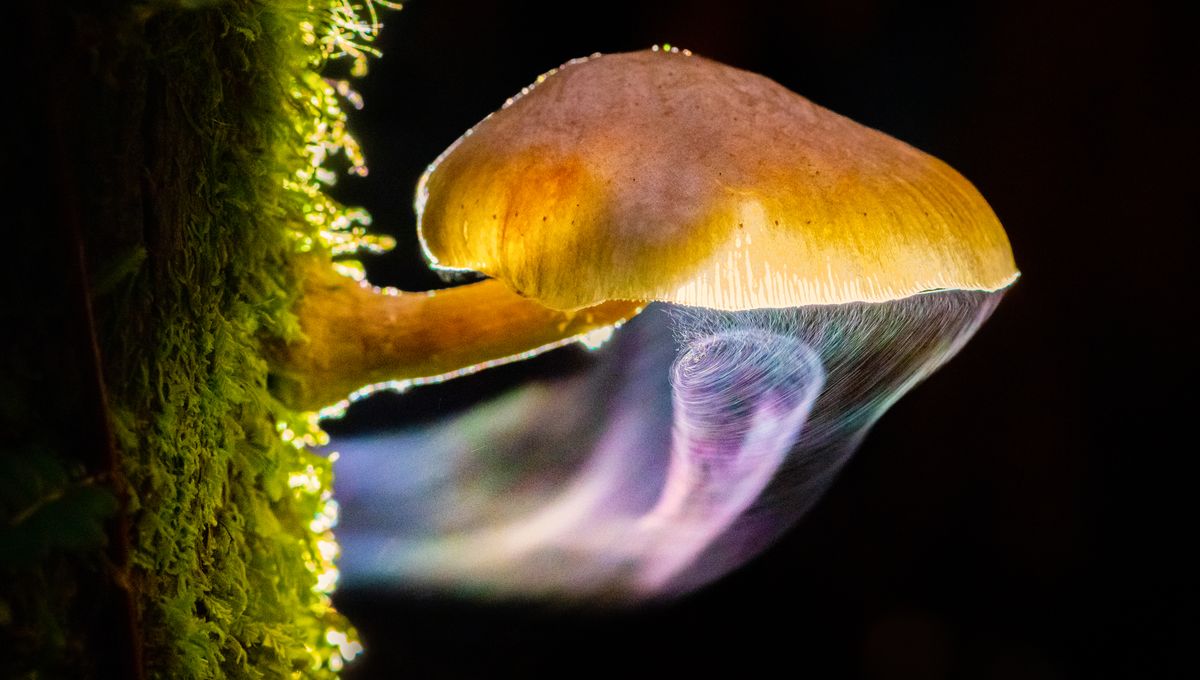
The devastation of tornadoes has been well documented through history, but did you know that every day there are miniature versions of these rotating columns of air happening all around us? However, though they be small, they are still deadly, capable of spreading spores in a way that can devastate surrounding plant species.
One such miniature vortex recently featured in the BigPicture Natural World Photography Competition (pictured above). Aptly named “Mushroom Tornado”, it was captured by photographer Liu Yang from YongChuan, Chongqing, China, during a visit to New Zealand.
It sounds ridiculous, but it all comes down to a quirk in the way that spores can spread when conditions are wet compared to when they are dry, something researchers looked into back in 2019 in their paper Vortex-induced dispersal of a plant pathogen by raindrop impact. The phenomenon isn’t specific to plants, as it can happen it other spore-producing organisms like the mushroom in the above photo, and the mini-tornadoes it produces are mesmerizing, if not a little devastating.
Scientists were eager to better understand how spores can disperse in wet conditions, as it can help us to better control the spread of pathogens among plant and fungi communities. Using a high-speed video camera and fluid mechanics, they were able to visualize the rust spores being released from an infected wheat leaf, and the results were unexpected.
“We observed thousands of spores being transported in air vortices following raindrop impact,” said Sunghwan Jung, professor in the Department of Biological and Environmental Engineering at Cornell University, in a statement. “That was quite surprising.”
The videos showed a previously unknown method of air-vortex dispersal that generated a swirling mechanism of spread that looked similar to a tiny tornado. Evolving to spread under wet conditions with the aid of raindrop impact appears to be just one of the many ways these spore-dispersing species have evolved to spread far and wide, and the Mushroom Tornado captured by Yang is no different.
Yang’s image was selected as a finalist in the BigPicture Natural World Photography Competition 2023 Landscapes, Waterscapes, and Flora category. Taken near Lake Matheson, which backs onto New Zealand’s Fox Glacier in Westland National Park, it makes the spreading of infectious spores look like nothing short of art.
“A mesmerizing, yet deadly, spore scene,” reads the photo’s caption. “This beautiful, mushroom-forming fungus (Armillaria novae-zelandiae) is a member of the Physalacriaceae family – one of three Armillaria species native to New Zealand. This highly invasive species is often found on decaying wood and capable of causing root rot in plants with which it comes into contact.”
If you’re going to spread deadly spores, you might as well do it with style.
These images originally appeared on bioGraphic, an online magazine about nature and regeneration and the official media sponsor for the California Academy of Sciences’ BigPicture Natural World Photography Competition.
Source Link: Dazzling "Mushroom Tornado" Captures The Complexity Of Raindrop Spore Dispersal